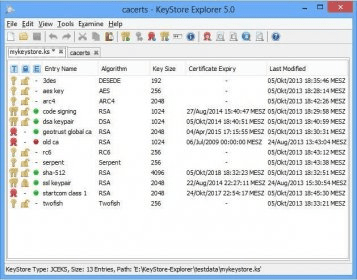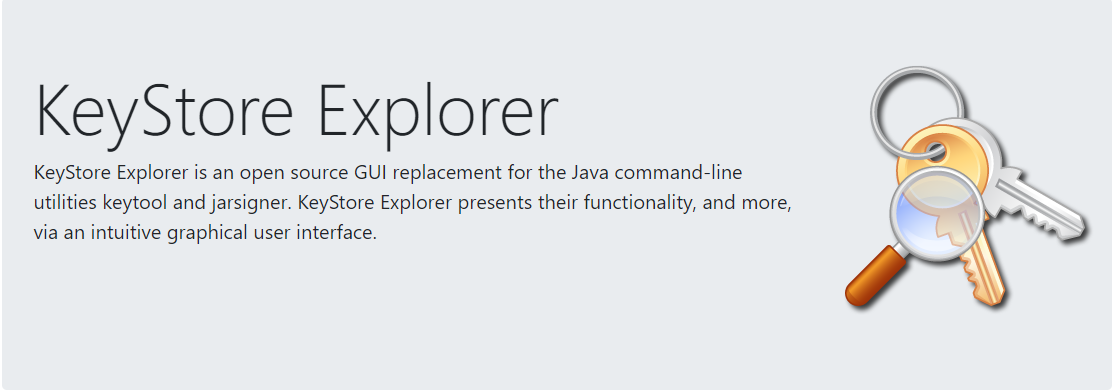

Note: that the example command above contains intermediate certificates for the standard Domain Validation type SSL. ca-bundle), you can download them separately here. If you received the intermediate and root certificates in one bundled file (. Where *your certificate* is replaced with your actual file name. Java -jar lib/ace.jar import_cert *your certificate*.crt SectigoRSADomainValidationSecureServerCA.crt USERTrustRSAAddTrustCA.crt addtrustexternalcaroot.crt

crt file received from the Certificate Authority) Security certificate file in PEM format (the.
#KEYSTORE EXPLORER ARCHIVE#
#KEYSTORE EXPLORER CODE#
The certificate should be installed in the folder where the CSR code was generated. This method is generally recommended, although it has some peculiarities, so it isn't always the most reliable. Please note, that the part /etc/ssl/private/ should be replaced with the path to your new Keystore where the new certificate files are located. Proceed with SSL setup using one of the below methods.Restart UniFI Controller using this command:.Comment out or remove the following line in /etc/default/unifi.Rm /usr/lib/unifi/data/keystore & cp /etc/ssl/private/ /usr/lib/unifi/data/keystore Remove the symbolic link to the default certificate file and copy the actual certificate file via:.To avoid this issue, regardless of what installation method you use, please complete the below steps first:

Important note: Sometimes, a default certificate on the server might be used instead of the one you install, which may cause security warnings in browsers.
#KEYSTORE EXPLORER HOW TO#
This guide outlines various alternative installation methods, shows how to fix common errors, and provides useful security enhancement tips. This method is relatively simple however, there is a common issue involving an error message that doesn’t indicate the actual root. Official documentation for the UniFi controller includes one method of installing an SSL. It has two variations: UDM-base, which is technically a modification of older UniFi controllers, and UDM-Pro, which has its own graphical interface for added ease of use. It usually comes with UniFi OS (a version of a Debian-based Linux Operating System). Unifi Dream Machine (UDM) is the latest version of network management hardware created by UniFi.



 0 kommentar(er)
0 kommentar(er)
